Serial Experiments Lain is weird. It is a series unlike any other, wholly unique in anime, both modern and historical. Every aspect of it, from presentation to narrative, is best described as an experience. It is because of this that I believe Lain is a must watch, if only to experience a piece of anime history. That said, Serial Experiments Lain can hardly be said to be an “enjoyable” series. It is certainly evocative, Serial Experiments Lain will bring about emotions and force you to confront reality in a unique way. But I at least did not end the series thinking I would watch it again anytime soon, and this density will no doubt be off putting for many. However while these may keep it out of my favorites, it is without a doubt worth your time. Lets go.
(Disclaimer: I am working to make 50 the new “average”. 70 is not an average score people. 70 is above average. Carry on.)
Animation/Art
Starting off, let’s talk production. Now, because of Lain’s age, we have to be a bit careful how we judge it. Lain comes from the tail end of the era of Cel Animation, where every individual frame had to be made by hand. Compared to Digital, they are two very different mediums and have very different strengths. This isn’t to say that Cel can’t have some fantastic sequences that hold up to this day. You need look no further than Cowboy Bebop, or even some of Lain’s episodes themselves for proof of this. Cel can still get a fantastic effect, it is simply more expensive and time consuming to produce, and so we got less of it. One could look at this another way though and say we are spoiled for animation now. As Lain’s lack of it makes those moments of beauty hit that much harder.
Getting to the point, none if this is to say Lain looks bad. Cel animation has a distinct style all its own. Its rougher, more obviously handmade, giving it a level of detail digital often can’t match. In digital, replicating things like brush strokes or pencil sketches are incredibly difficult. Almost impossible. If I had to compare it to something, it would be CGI to Claymation/Stop Motion. The actual physical objects have texture and weight to them that is very difficult to replicate in CGI. It’s very similar with Cel to Digital animation. You can see this in a number of hand-made backgrounds for Serial Experiments Lain. Basically, Digital can sometimes look too clean, removing any texture from the scene at all. All my rambling on Cel vs Digital aside, the point is, Lain might not have a lot of animation, but it doesn’t need it to look good.
Direction
This all leads into the Direction, which is where Serial Experiment Lain’s real strength lies. When your animation prospects are limited, you have to find other ways to get your scene across. Some series do this with a lot of dialogue. Others fail to do it at all. Lain though… Lain does it with fantastically surreal imagery and depictions of the Wired. Getting information across purely through scene composition. Examples of this include almost every instance of Lain surfing the Wired. With other users being represented by floating body parts, since they cannot fully realize themselves like Lain can. Their forms and the environment they are talking in giving just as much information as the actual conversation. Its things like this that I believe we have lost with the advent of Digital Animation. As the lack of limitations means less creativity is required for any given scene.
All that said, this doesn’t mean I think Lain is perfect in this respect. Just more positive than negative. There are a number of scenes, and even an entire episode, where Lain goes a bit to wild for my taste. Completely divorcing itself from the reality of the show, what little there is. This intense imagery also negatively impacts pacing at times for me. Occasionally drawing me out of what is happening or forcing me to either stop the show and examine the scene, or let it play on and miss something important. This goes back to my opening statement about Lain’s density possibly turning some people off. It is not an easy to consume show. And however valuable its message and contents are, it is a simple fact that people’s time is limited and enjoyment is something to be treasured and considered in a series.
Sound Design
The last bit of production we will talk about is the sound design. This was really hit or miss with me. Sometimes it was fantastic, really nailing that foley work. For instance any of the Iwakura household meals had some fantastic silverware and eating sounds. In addition the ambiance throughout the show was great to. Such that I almost think they just recorded an actual intersection. However, as much as I enjoyed these, this high bar makes the ones that don’t meet it stand out. For example a lot of the voice acting just feels flat and lifeless. Part of this is no doubt on purpose, as a theme throughout the series is Lain’s humanity. But from the perspective of an average viewer, it can make some longer dialogues a slog to get through. However interesting the content might be, poor delivery will hamper the experience.
On the other end of sound design, we have the OST. I’ll be honest here, I had to actually look up and listen to the OST on its own for this review. As aside from the OP and the Lain’s theme. All in all, I didn’t find it particularly memorable. There are some interesting tracks inside it, such as Mist of a Different Dimension and Wind of Space and Time. However, as a general album it’s not my style, as general Rock isn’t my personal genre. This isn’t to say I think it was terrible, I think Lain’s OST really adds to some scenes. I just wouldn’t buy the album to listen to in the car. Not like I have Yuki Kaijura’s .hack//SIGN OST or Berserk ’97’s OST. So all in all, an acceptable, but not memorable showing here.
Story/World
Finally though, we can get to the meat of Serial Experiments Lain, the Story and Themes. Now, I am no expert philosopher, I am just your average anime viewer with an ego and a penchant to write to much. So I will not be deep diving into the tiniest of details or attempting to tell you what Lain’s message and purpose is. Instead, I will only tell you whether or not I found it worth my time, and why. You see, however dense Lain may be, and it is very dense, I never felt… lost. Lain managed to get the basics of its message across every time. Even if the larger or more detailed aspects are lost on you like they were me, there is still something for us there. A base upon which to build your own philosophy and opinion, rather than say Paranoia Agent’s wild spread.
Before I get into that though, I want to talk the ending, as for me endings are paramount. While it still confused me at times, I think Lain’s ending was perhaps its best aspect. It managed to wrap up all of these different ideas about reality, godhood, and self-perception in an engaging way. So much so that someone like me, who clearly wasn’t able to grasp the more complex aspects, was able to follow along. To put it simply, Lain’s ending was engaging on both a narrative and a thematic level. Fulfilling for both kinds of viewers, regardless of what they enjoyed about the show. Whatever issues the narrative had leading up to it, and there were a few confusing or dull moments, this ending managed to wrap it up nicely, without compromising its characters or themes. Well done Serial Experiments Lain.
Themes
Now for me, Serial Experiments Lain’s theme/plot centers around the idea of our perceived reality. About whether or not a reality exists outside of what you can perceive. Lain hammers this from multiple interesting angles though. From anonymity with the Wired/Internet, to your and others perception of your self, your ego. My personal favorite of these was the idea that you only exist in other peoples memories and how they perceive you. In theory with this line of thinking, there are in fact multiple you’s, each one representing a different public face for that group of people. The question then becomes, are any of them the real you? Or are they all parts of a whole, that whole being how you perceive yourself? This is but one of the questions Lain raises with me, but it is also my personal favorite.
Serial Experiments Lain also spends a lot of its time seemingly commenting on the growing use of technology in society. How it will effect our day to day life and our interpersonal connections. Now one must remember for this, Serial Experiments Lain was made in ’98, well before modern internet culture and practices. Because of this, some of Lain’s technological commentary and themes are incredibly poignant. Such as its prediction of what is basically Anonymous, or the rise of anonymous internet culture and how people act. Once again returning to our perceived reality. However, for every hit, I think Lain misses the mark on its technology aspect a bit. For instance, I had a hard time reconciling Lain’s veritable godhood with the reach of technology in this/Lain’s world. It still works in the larger story, but was definitely one of the aspects that sailed over my head.
Conclusion
So, all in all, to long didn’t read, how was Serial Experiments Lain? For all of its density, it’s difficult subjects and wordy dialogue. In spite of the sometimes surreal visuals and flat delivery, as a viewer, I feel satisfied. In spite of my general distaste for meandering pseudo-philosophy, I feel I left Lain with something new. New thoughts, new feelings, that it made me ask questions on topics I had not truly considered before because they never normally came up. Basically, Serial Experiments Lain contains something for someone of every level anime interest. From newbies just setting their foot into the medium, to old fogeys who have somehow missed this series. There is nothing else like Serial Experiments Lain out there. So while you may not enjoy it in the traditional sense, I believe Lain is worth your time. Even if only to experience a piece of anime history.
So there you have it everyone, we have completed another season of Throwback Thursday. For those of you still here, I am sure you are interested in what is coming up next. Well, the winner of the poll and the series we will be starting next week is: Mononoke! I have a feeling I am going to enjoy this one. The art style reminds me of Gankutsuou in a way, while the story synopsis is like a different sort of Mushishi. The plan of course is to do this as 1 episode a week, but Mononoke has something special to it. The series is an offshoot of the last 3 episodes of Ayakashi: Samurai Horror Tales. While I won’t be making a post for those 3 episodes, I will be watching them in preparation for the greater series. So I recommend you do as well. See you then!

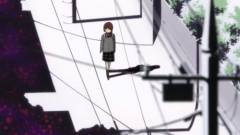
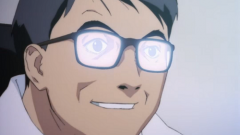
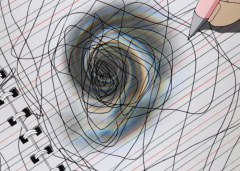
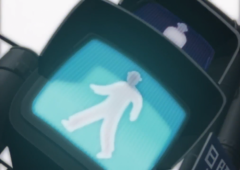
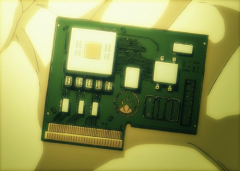
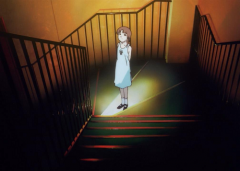
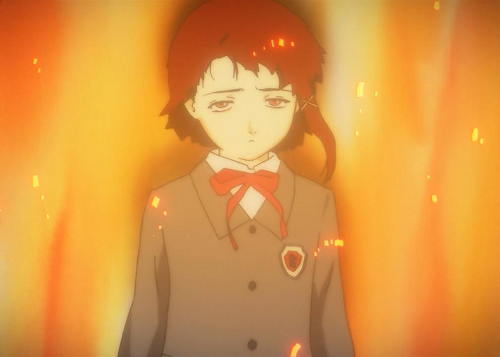



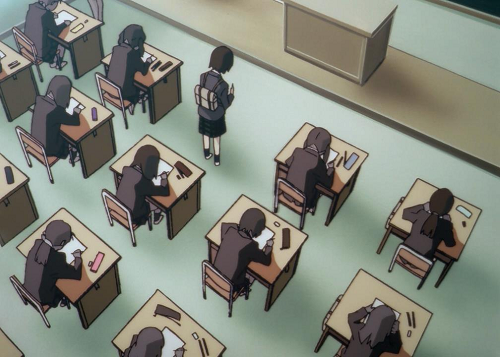

Well, now we have two reviews of Lain on here: Psgels one from 2006, and yours.
Reading this over a few times, I’m happy with the score you gave it and believe its a fair review of what is pretty much my favourite anime of all time.
I do think, in regards to the voice acting, whether it is accidental or not, I think the flatness adds to the muted/clinical/cold feel of the show.
I like the idea of there being more than one review for a single show on this site, it gives a chance for a good second opinion.
I am glad you think so, your stamp of approval means a lot! I tried my best to be fair to the series and not try to pander or slam it to hard. To just be honest with how I felt. And I will admit, I was a little daunted when it came to writing this, as I know its such a seminal series for so many people, and I can see why! It is wholly unique in anime.
I actually feel like, had I seen it at a different age or back when it first aired in ’98, this review would be completely different. Yet I wanted to try and reflect what the viewing experience for it is like in the modern age, compared to modern series.
Just a small correction. Serial experiments lain is NOT a purely cel-animated work. It’s a combination of both digital and cel-animation (You can notice the digital animation portions both in its color composition and pre-2000 digital effects). I notice people tend to make that mistake quite often, which is understandable considering how retro the show looks
Ah is that so? I was under the impression that digital animation was still in its infancy around Lain’s time, so there wouldn’t be much if any of it, and sources were hard to come by on this one.
Thanks for the info!
This is a very difficult show, and very difficult to rate. I do not really have an opinion on how it should be rated.
Personally, I think we should value ‘experience’ shows more, because they are trying to break through the very definition of the medium, it’s like they are really trying hard to be a piece of art. And they are timeless.
I’m sure there is a bunch of people here who are at least familiar with Ghost Hound (Shinreigari). Very ‘experience’-heavy show (well, its by the same guy as SEL). Shows like these deserve more spotlight.
Well, nowadays we at least know the secret sauce: ASMR. SEL, Shinreigari and lots of ‘cool’ stuff out there is utilizing ASMR, without knowing (well, since the term is pretty recent). We need more ASMR shows.
Hmm, now I largely agree on ghost hound, it had a tremendous atmosphere, but the ending got pretty messy if recall when it came to wrapping up? And some of the convolutions didn’t work?
Been years since I saw it.
You remember well. The ending was rushed and out of nowhere and also changed the tone dramatically. As if they realized they had 2 eps left in the middle of it. But honestly, the reports of bad endings ruining shows are, in my opinion, largely exaggerated.
Interesting post. It was good to read!